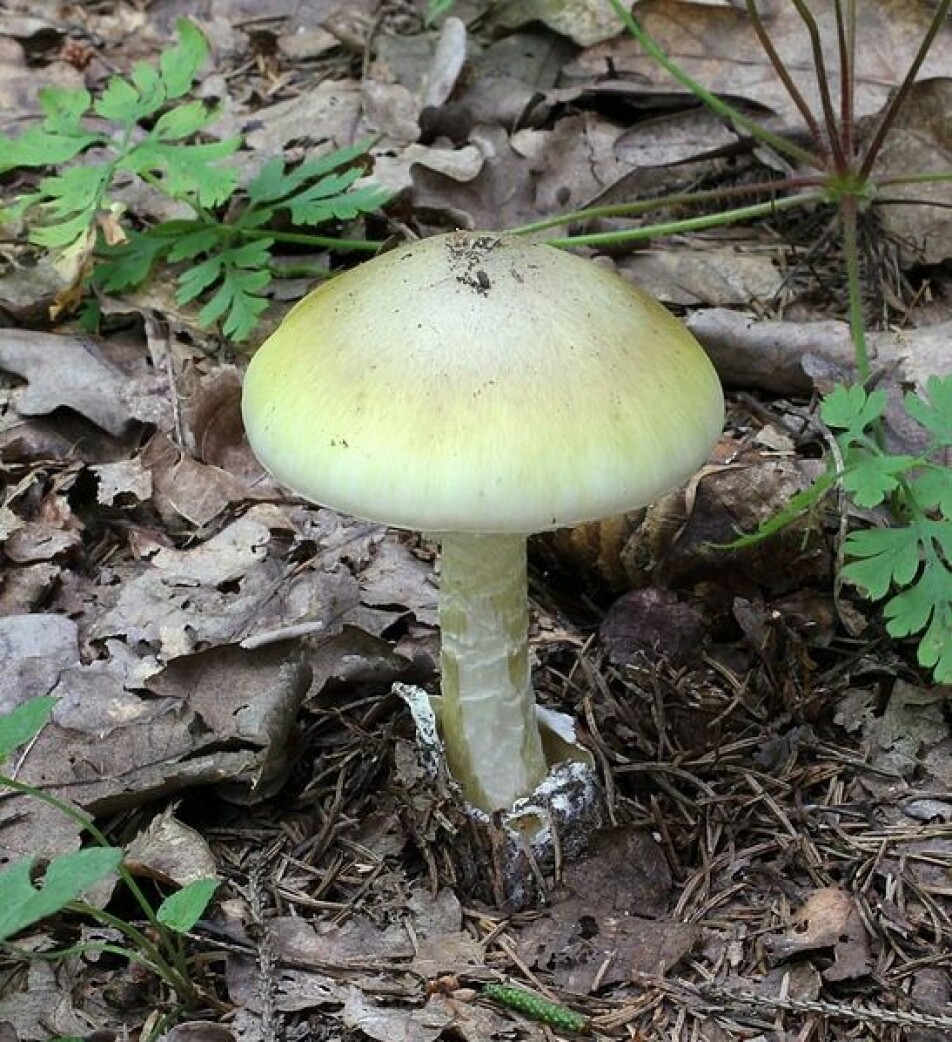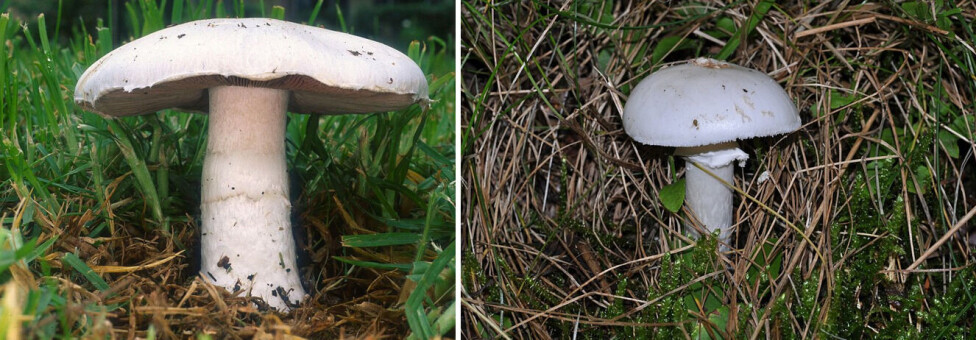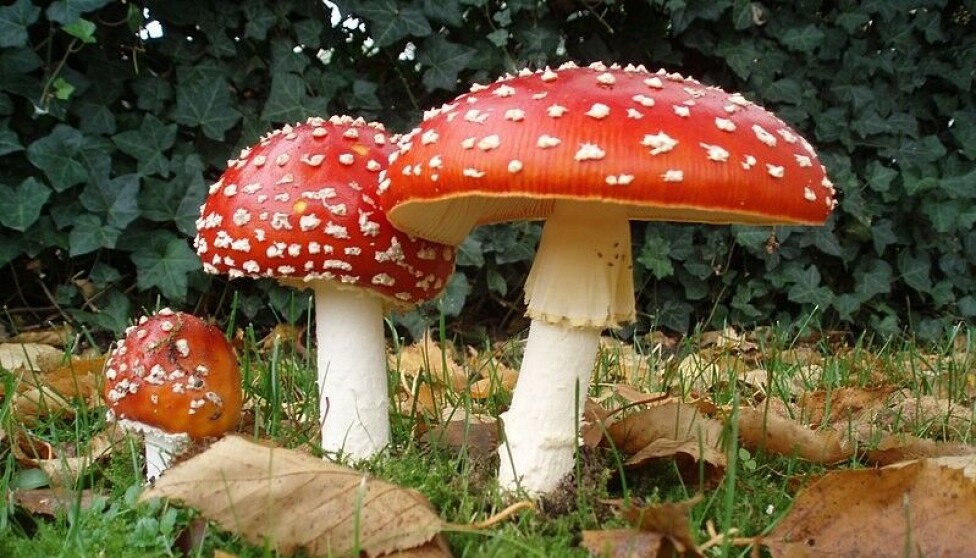Researchers' Zone:

Cell death and vomiting: This happens in your body, if you eat poisonous mushrooms
Toxic mushrooms can be found in Danish forests. But what makes them so poisonous?
Every year, when summer makes way for fall, many enthusiasts set out into the woods in search of the finest catch for their table. Hunters? No- or at least not from an animal’s perspective.
In fact, the prey they so eagerly seek are fungi that sprout out from the soil as fleshy, soft fruiting bodies, often culminating in a wide cap - more commonly referred to as mushrooms.
Although long considered to be plants, mushrooms are actually fungi and, therefore, part of an incredibly diverse kingdom, with possibly millions of species that remain largely undescribed as of today.
Of all fungal lineages, mushrooms are arguably the most appreciated thanks to their culinary popularity, ranging from ‘pauper’ food items to highly sought-after delicacies.
However, any mushroom adept knows that only certain species are delicious ingredients in the kitchen, while others are not pleasant to the palate - and some might very well constitute your last meal if you so much as taste them.
In this article we will focus on the mushrooms that belong to the latter category (i.e., poisonous ones) by exploring two different kinds of dangerous toxins they possess: the amanitins and the muscarines.
Deceiving numbers
While full-scale medical emergency mushroom poisonings aren’t commonplace, they do occur regularly and increasingly often throughout the world, likely due to the increasing popularity of mushroom consumption combined with the lack of knowledge on their identification.
In the Northern hemisphere alone, thousands of mushroom poisoning cases are reported every year with one of the most recent fatality cases happening to two Afghan refugee children last summer in Poland.
It is estimated that annually at least 100 cases of mushroom poisonings result in fatalities worldwide. Yet these numbers are most likely an underestimation. On many of these unfortunate occasions, the culprit is a species in the Amanita mushroom genus (a group of closely related species).
The most infamous representative of this group is arguably the death cap (Amanita phalloides), which is found throughout the world - Denmark included. Such grim premises beg the question, what substances do these mushrooms contain to be so dangerous?
The death cap and the amanitin toxins
The flesh of Amanita species such as the death cap is rich in small, ring-shaped molecules known as amatoxins, which are also abundant in the equally poisonous genera Lepiota and Galerina.

The most potent members of the amatoxin group are the amanitins, which affect protein synthesis (production) – a core process in any cell in the body. Specifically, amanitins bind the enzyme RNA polymerase II (RNAP II), which normally uses the cell’s DNA as a template to produce RNA.
RNA is the molecule that in turn serves as the template to produce proteins. This step is vital for the cell, as the proteins constructed from RNA are essential for the cell's own internal processes as well as tissue- and organ-level functioning.
However, the binding of amanitins acts as an “off-switch” for RNAP II, which is rendered inactive and is thus unable to perform its crucial role. Disruption of the production of proteins, in turn, triggers a domino effect leading to the collapse and breakdown of the affected cell.
The liver takes the beating
The prospect of having your cells destroyed one after another already sounds uncanny, but it gets even worse from an organ- and whole-body perspective.
In fact, all this cell-destroying mayhem most often takes place in the liver, where toxins and waste are regularly processed and neutralized. However, amanitins turn the tables by breaking down the liver, cell by cell, with a risk of acute liver failure and death.
Before this stage, amanitin poisoning generally leads to vomiting, dizziness, weakness and jaundice (skin turning yellow due to leakage of waste compounds from the liver) among other symptoms.
When transplant is the only option
Sometimes, amanitins are also transported to the kidneys for elimination through urine, which can result in fatal renal failure as amanitins destroy kidney cells as they do in the liver.
To make matters even worse, there is no specific treatment against amanitin poisoning yet.
While several measures such as penicillin and milk thistle (rich in compounds that interfere with amanitins) are commonly used to mitigate intoxication, a liver and/or kidney transplant is currently the only treatment option in the most severe cases.
The failed quest for a treatment
Over 30 years ago, a team of researchers tried to tackle this problem by producing antibodies specifically tailored to bind and neutralize amanitins, which in their plan would have provided a safer and more effective treatment.
However, this strategy quickly backfired in early experiments; while the antibodies did display the desired strong binding to the amanitins, they unfortunately also redirected them to the kidneys, where antibodies generally pass before getting either eliminated or taken back up into the bloodstream.
When the antibody-amanitin complex entered the kidney, amanitin was reabsorbed together with the antibody instead of being expelled in urine. This resulted in accumulation of amanitins in the kidney, where they promptly caused serious damage to the kidney cells.
After this, and perhaps prematurely, antibody-based therapies were disregarded for mushroom poisonings. However, given the lack of alternatives, we are to this day left without any specific cure for the devastating consequences of amanitin poisoning.
Heat- and cold resistant: The toxins that just won’t die.
Nevertheless, it is still common for people to underestimate the danger posed by amanitin toxins when picking and preparing mushrooms.
After all, cooking or freezing them will surely denature the toxins and render them harmless, right?
Wrong. As it turns out, amanitins are resistant to both heat and cold, making them virtually invulnerable to boiling temperatures as well as freezing at -20 ℃.
Deadly or not?
With this in mind, it is easy to see how even apparently trivial misconceptions on identification and potential dangers of mushrooms can have catastrophic consequences.
This is especially important for mushroom collectors, who frequently study and carry field guides to identify poisonous species.
It is not an easy task, considering that many poisonous Amanita mushrooms (including the death cap, and Amanita virosa, known as the destroying angel) closely resemble perfectly edible relatives in shape and colour.

Getting on your nerves: Muscarine
While amatoxins - and amanitins in particular - stand out among mushroom poisons for their potency, plenty of other toxic molecules of great scientific interest can be found in mushrooms.
A notable example is muscarine, a molecule that affects neurons and inhibits contraction of involuntary muscles such as those in the heart and blood vessels.
Muscarine is nothing short of a pillar in the history of human biology studies. In fact, the study of its toxic action was instrumental in determining the mechanisms of the parasympathetic nervous system (a division of the nervous system regulating a variety of unconscious actions such as blood circulation).
Muscarine impairs the body’s signal system
Muscarine binds to receptors that eventually came to be known as "muscarinic receptors", as the binding compatibility of the receptors with other molecules was first described using muscarine as a model. These receptors function as “gateways” for the transmission of input from the neurons to other tissues, being activated upon binding with “messenger” molecules known as neurotransmitters.
In fact, the muscarine molecule competes with acetylcholine, a neurotransmitter tasked with relaying signals from the nervous system to other organs. Acetylcholine is unable to bind to muscarinic receptors that are blocked by muscarine.
This leads to impaired transmission of signals from neurons to the target organ- usually the heart, with a drastic drop in blood pressure and possible circulatory failure as the most dangerous clinical outcomes.

Muscarine vs amanitins: one clear winner
Despite the neurotoxicity described above, muscarine is not as potent as amanitins, requiring considerably higher concentrations to be lethal- more than is usually found in any of the mushroom species that possess it.
The most famous muscarine-containing mushroom is the fly agaric (Amanita muscaria), which muscarine takes its very name from. Ironically, however, the fly agaric only possesses trace amounts of muscarine, while several species in the lesser known Inocybe genus contain large quantities of this toxin.
However, the fly agaric still achieved an arguably unmatched cultural status among mushrooms throughout human history- all thanks to another intriguing effect of its toxic weaponry, which is discussed in part two in this two-article series on mushrooms: “Heading towards mushroom wonderland“.
References:
Christoffer V. Sørensen's profile (DTU)
Lorenzo Seneci's profile (DTU)
Timothy Patrick Jenkins' profile (DTU)
'Mushroom poisoning: A proposed new clinical classification', Toxicon (2019), DOI: 10.1016/j.toxicon.2018.11.007
'Amatoxin-Containing Mushroom Poisonings: Species, Toxidromes, Treatments, and Outcomes', Wilderness & Environmental Medicine (2018), DOI: 10.1016/j.wem.2017.10.002





